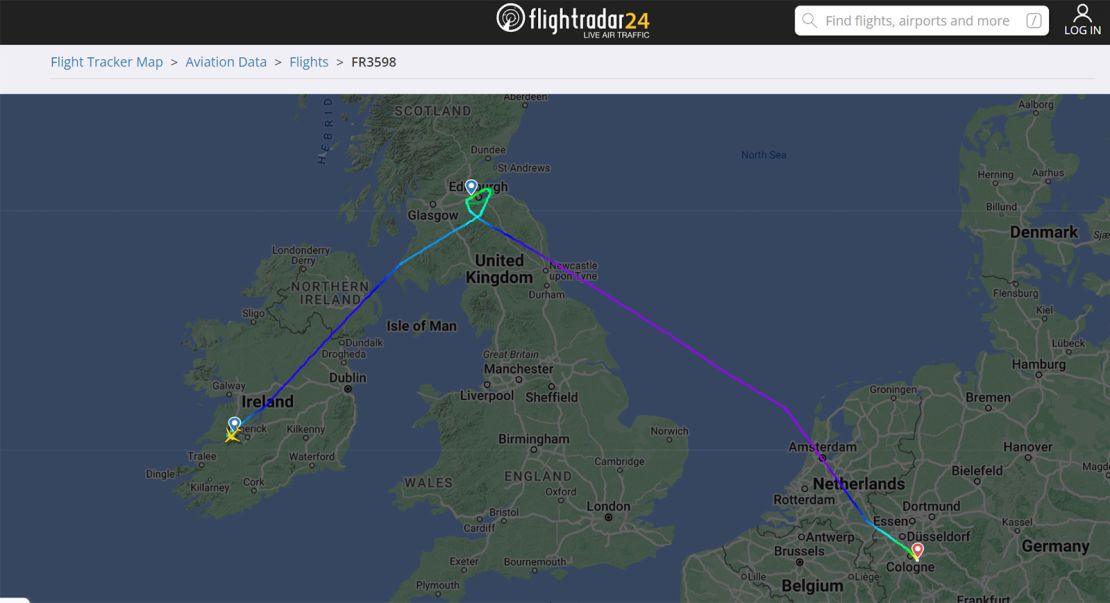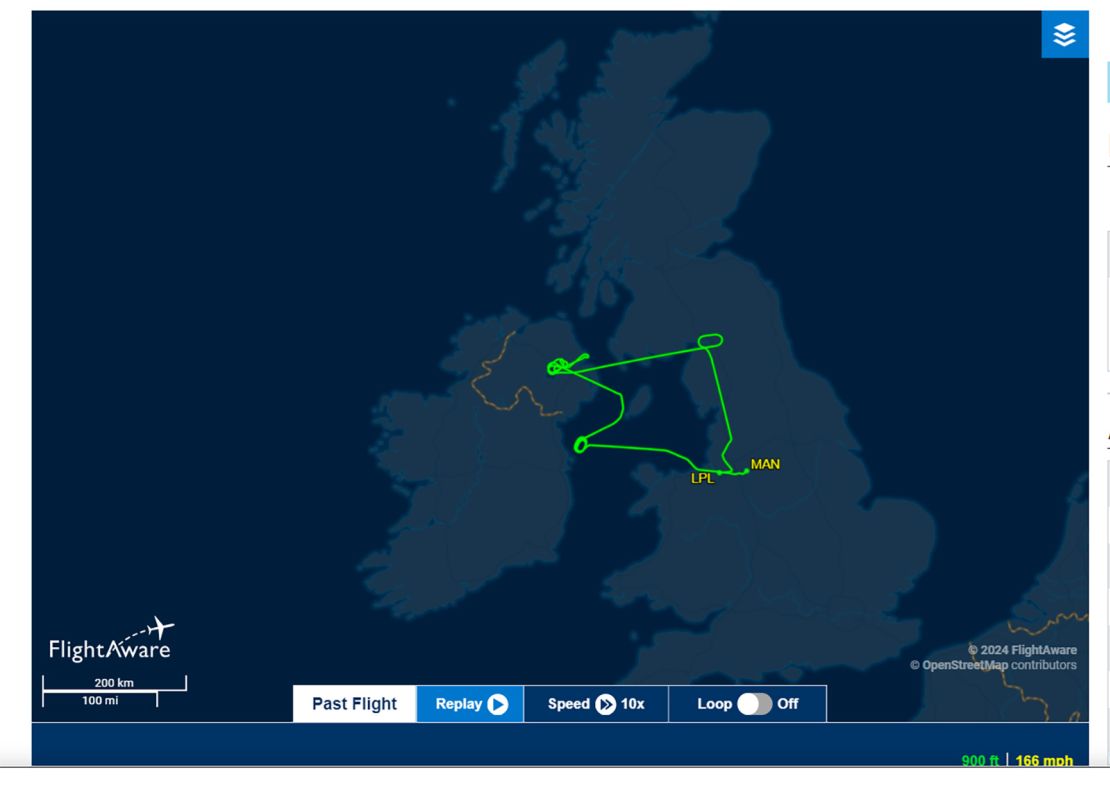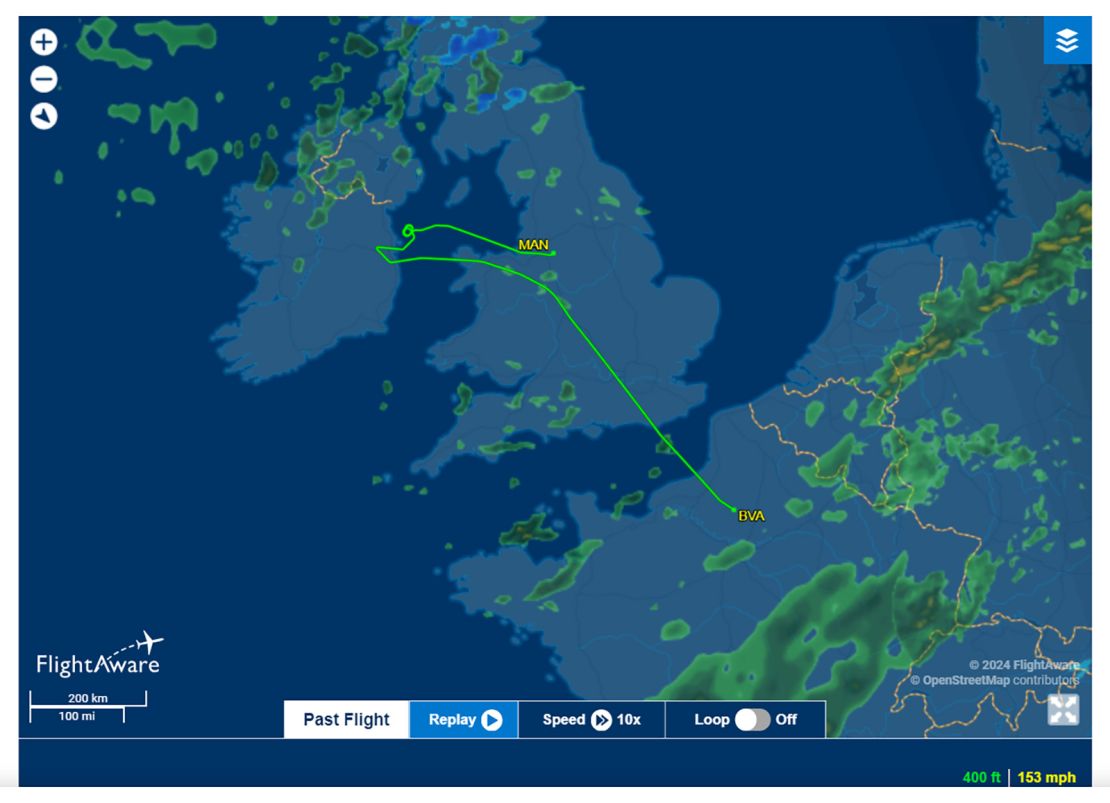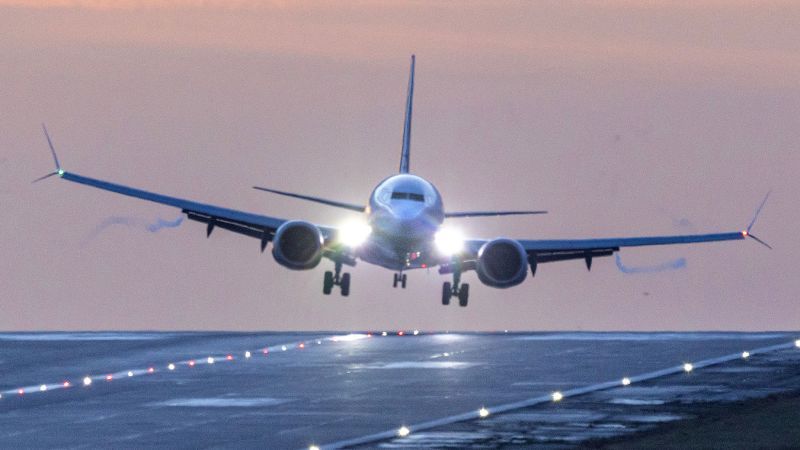Editor's note: Subscribe to Unlocking the World, CNN Travel's weekly newsletter. Get the latest news on aviation, food and drink, where to stay and other travel news.
cnn
—
Thousands of airline passengers across Europe woke up this morning at the wrong destination – and even the wrong country – after Storm Isha wreaked havoc on flights, with dozens of cancellations, diversions and turnarounds across Western Europe.
It's usually the quickest way to get from A to B on long journeys, but for those who traveled to and from Ireland and the UK last night, flying became an ordeal. Airports in Ireland and the United Kingdom were severely affected by the storm, with gusts of up to 90 mph hitting runways.
Many planes heading west were diverted to safer landings in continental Europe, and had often flown to their destination before failing to land. Ryanair was particularly hard hit as it is based in Dublin, where a whopping 166 inbound and outbound flights were canceled on Sunday, according to Kevin Cullinane, head of communications at daa group, the operator of Dublin airport.
The airport also experienced 36 flight diversions and 34 turns, in which planes abandon landing midway and decide to “turn around” for another attempt.
The figures explain the extraordinary scenes that unfolded as planes attempted to complete their flights to and from Ireland.
A Ryanair flight from Lanzarote in the Canary Islands to Dublin made it almost as far as the Irish capital before turning around and diverting to Bordeaux, France, without attempting to land.
Storm Isha hits the British Isles

Another Ryanair flight, FR555, was intended to make a quick hop from Manchester to Dublin. After circling nearby in a holding pattern, she attempted to land in Dublin, but turned around and diverted to Paris Beauvais. What is normally a half-hour flight turned into two and a half hours.
Another Manchester-Dublin flight traveled back and forth between the UK and Ireland for more than three hours, appearing to circle but abandoning the landing in Dublin, attempting to land in Belfast (where it circled) and flying over Glasgow beforehand. landing in Liverpool, just 31 miles from the departure airport.

A third, FR816, which was due to make the hour-long flight from Shannon to Edinburgh, flew to Scotland and then diverted to Cologne in Germany. It also suffered a long delay: it was due to leave Dublin at 3:35 p.m. and arrived in Cologne around midnight.
A Lufthansa flight from Munich to Dublin was forced to turn around and return to Munich.
Cork, Ireland, suffered 13 cancellations on Sunday, as well as six detours and seven turns.
The United Kingdom was also severely affected. According to NATS, the UK air traffic control operator, more than 100 spins occurred at UK airports.
“Isha made her presence felt in the south of England and Ireland, where winds were blowing between 70 and 75 mph, from the southwest, which meant crosswinds at our main airports in the south, and wind shear and turbulence added challenges. additional for flight crews. ” wrote Steve Fox, head of network operations at NATS, in a blog post.
“And in the north of the country, the winds were even stronger, with gusts of more than 150 kilometers per hour, which created problems not only for aviation but for the entire transportation infrastructure.
“As UK airfields began to fill with planes that could not take off or were diverted, throughout the afternoon we monitored the situation as planes were diverted from Dublin to Deauville, Edinburgh to Cologne and elsewhere in the UK. that it would be less affected and there would still be space available in the pilot's landing zone. critical decision point.
There were 44 cancellations at Edinburgh, according to an airport spokesperson, who called Sunday's operations “challenging.” Eight flights were diverted.
According to a spokesperson, there were 14 cancellations at Manchester, but fewer turnarounds than at other airports due to the direction of the gusts. “We saw some flights diverted out of Manchester and others to Manchester due to conditions at other airports, particularly Dublin,” they said. The national airline Loganair canceled all its flights at the airport yesterday.
London's Gatwick Airport suffered 22 diversions but was able to catch five flights diverted from other airports, according to an airport spokesperson. Stansted, north-east of London, was less affected, with nine cancellations but receiving 31 diversions.
An easyJet flight from Antalya, Turkey, to Manchester, made it as far as the UK before turning around and landing safely in Lyon, France.
One plane even attempted to land in the UK instead of continuing on its route. Ryanair flight 718 from Manchester to Budapest was seen descending to 1,200ft at Stansted before ascending again and continuing towards Budapest.
Flight-tracking websites lit up with strange routes and eddies, as planes circled, waiting for a safe window to land, and then turned to divert somewhere in another country.
By Monday morning, the knock-on effects were already being felt, with out-of-position planes scattered across Europe. As of 8.30am there had been 29 cancellations in Dublin, Cullinane said. Passengers affected by the storm will have additional parking charges waived, he added. There was only one cancellation in Cork today.

As is usual when there is a storm in the UK, Big Jet TV's aviation presenter Jerry Dyer was at Heathrow, watching the planes arrive during the afternoon.
Although the winds had not reached their peak (Dyer stopped the broadcast when it got dark), he caught on camera planes struggling with the wind and making hard landings, such as an Aeroméxico flight from Mexico City, which began to “oscillate” while landed. , leaning from side to side.
“It's like driving a vehicle in strong winds, you're counteracting everything,” he told CNN.
“It's very controlled, they know what they're doing.”
More than 350,000 people have seen his images of Isha's landing.
“People are looking for entertainment value, but they're also secretly watching to see if something happens; they want drama, like a back-and-forth,” he said.
Another transmitter collected images of every turn at Birmingham airport.
A pilot who landed at London's Heathrow late in the afternoon told CNN they battled winds of nearly 90 knots (104 mph) at 3,000 feet, which dropped to 35 knots (40 mph) at ground level.
“Getting the plane to land safely is a huge team effort in circumstances like yesterday and not the entire team is flying the plane,” said the pilot, who preferred to remain anonymous because his airline does not allow them to speak in person. your name.
“This presents significant challenges not only for the pilots but also for the air traffic controllers who direct the aircraft towards its final approach. Yesterday the wind was so strong that we had a ground speed that, in less extreme conditions, a helicopter would have overtaken us.”
They added that dealing with situations like this is normal.
“While it can be exciting and sometimes stressful for passengers, and even entertaining when narrated by Big Jet TV's Jerry, it's all part of the daily job of an airline pilot. We train for these extreme events and plan for success, but we also consider our contingencies in great detail. “Yesterday we allowed enough fuel for an additional approach if necessary, an additional wait and even a detour to an airport where the wind was not as strong,” they said.
“Safety is not an accident, it is about planning and having options when a landing at your destination is not assured.”












